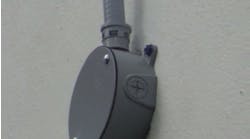Q. What are the Code rules for the installation of receptacles to serve dwelling unit garages and accessory buildings?
Scroll Down to See the Answer
Underlined text indicates a change in the rules for the 2017 NEC.
A. For one‑ and two‑family dwellings, at least one receptacle must be installed in accordance with Sec. 210.52(G)(1) through (3).
(1) Garages. At least one 15A or 20A, 125V receptacle outlet must be installed no higher than 5 ft - 6 in. above the floor in each vehicle bay in each attached garage and in each detached garage with electric power.
(2) Accessory buildings. A 15A or 20A, 125V receptacle is required in each accessory building with electric power.
(3) Basements. Each unfinished portion of a basement must have a 15A or 20A, 125V receptacle outlet installed. Note: One 15A or 20A, 125V receptacle outlet is required in a dwelling unit basement even if no portion has been finished into a habitable room. The purpose of this requirement is to prevent an extension cord from a non‑GFCI‑protected receptacle from being used to supply power to loads in the unfinished portion of the basement.
GFCI protection is required for all 15A or 20A, 125V receptacles installed in unfinished basements [210.8(A)(5)], detached garages, and accessory buildings with electric power [210.8(A)(2)] of dwelling units.



